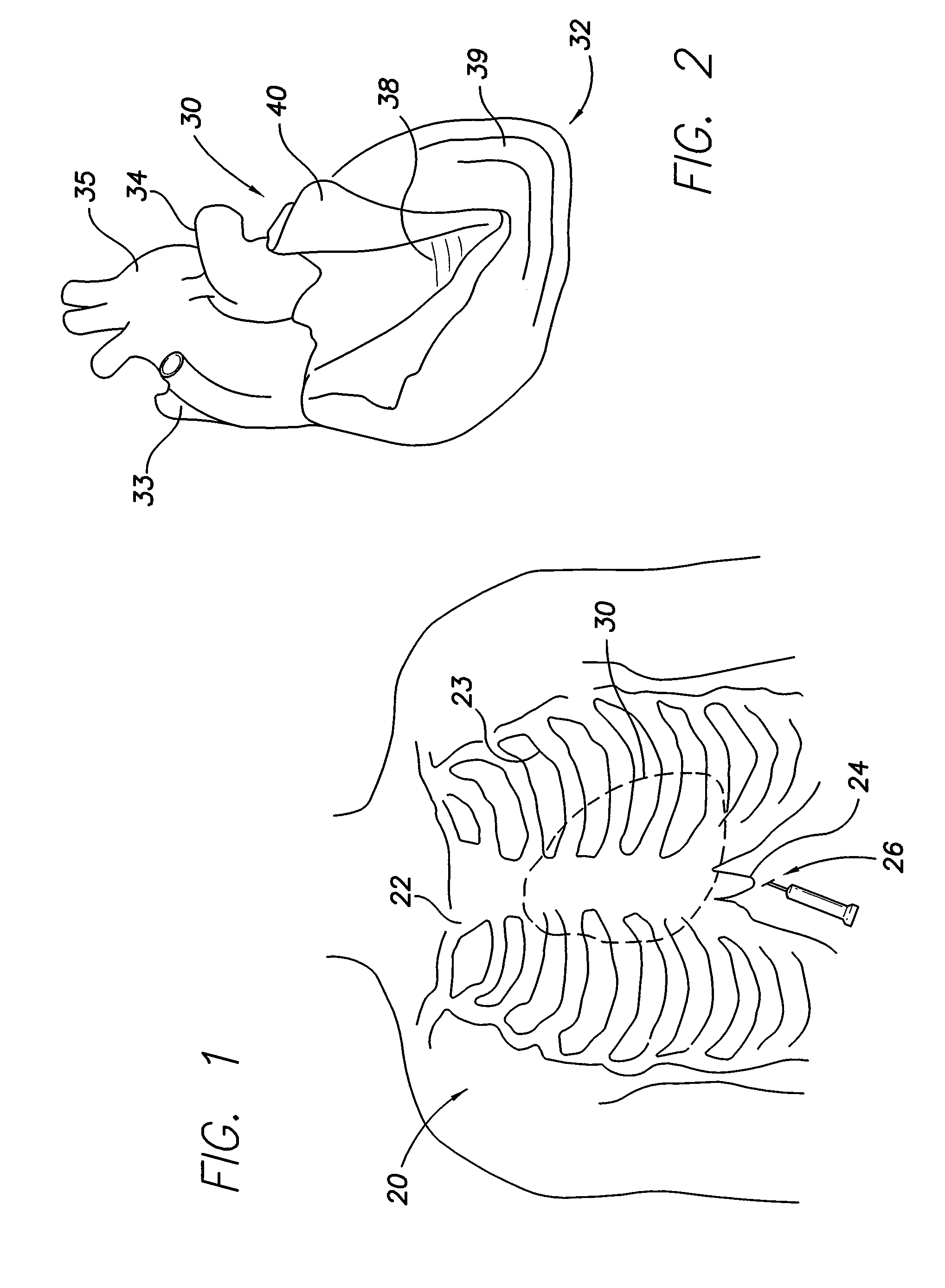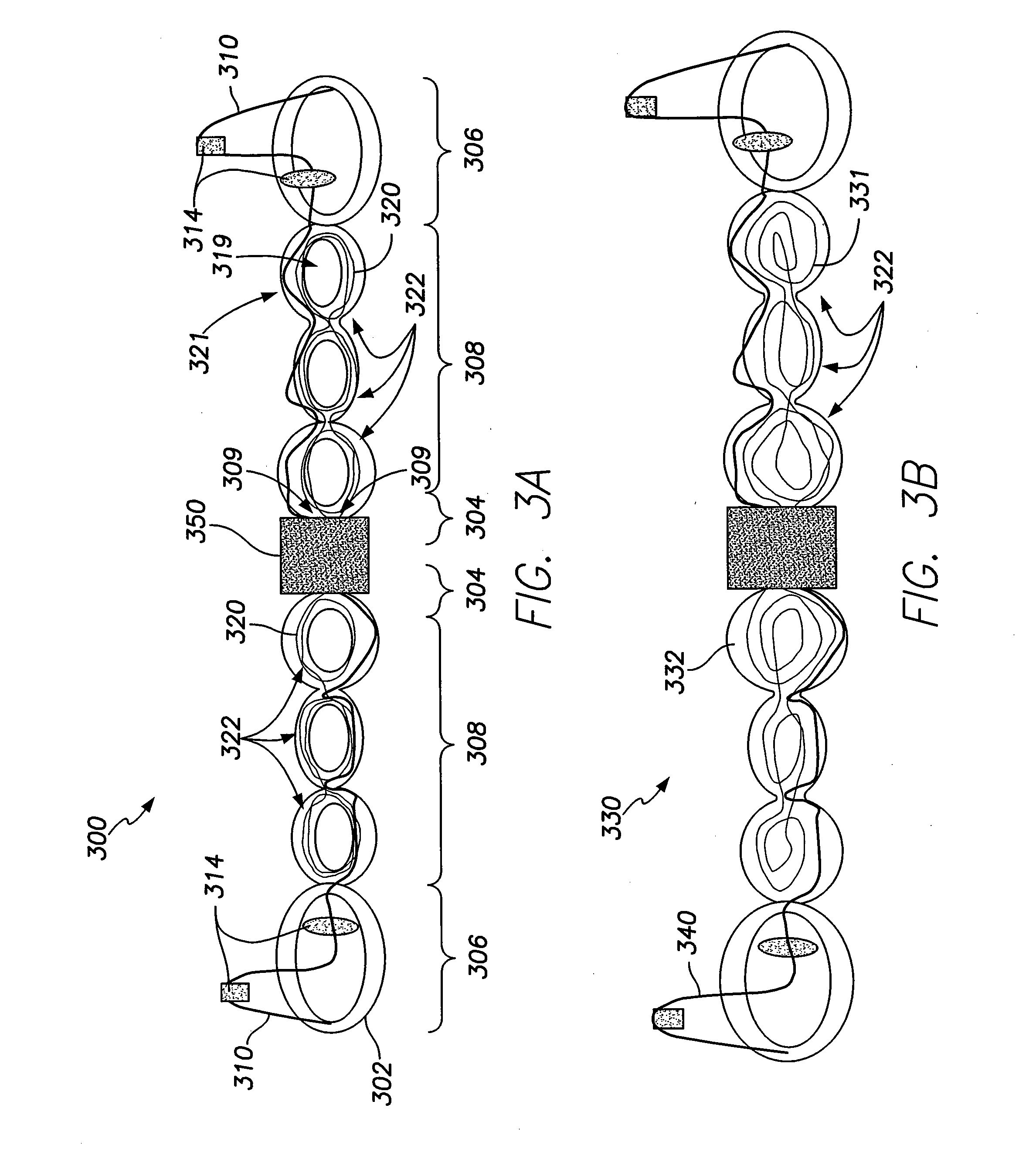Intra-pericardial medical device
a medical device and pericardial technology, applied in the field of implantable cardiac devices, can solve the problems of difficult placement of the left side, long or unpredictable amount of time needed for the implant, and a large portion of the patient population is unable to receive this type of treatment, so as to reduce the heating source of the rf, avoid eddy current flow, and avoid large force and torque
- Summary
- Abstract
- Description
- Claims
- Application Information
AI Technical Summary
Benefits of technology
Problems solved by technology
Method used
Image
Examples
Embodiment Construction
[0036]Embodiments of the present invention provide an intra-pericardial medical device (IPMD) having, among other things, a unique telemetry design that is integrated into a lead body with pacing / sensing leads. The IPMD may be stretched to desired locations, such as LA and LV or traditional RA and RV or other combinations of the four heart chambers (RA, LA, and RV and LV). A small pacemaker unit (e.g. nano-pacer) may be located at an intermediate position (e.g. the center) along the lead body of the IPMD. The pacemaker unit may be positioned at an intermediate position with a telemetry antenna or, alternatively, at other locations such as at ends or a center point along the telemetry antenna and / or lead body.
[0037]Embodiments disclosed herein are directed to IPMDs that facilitate and enhance the accurate placement (and monitoring of such placement) of medical electrodes. Although embodiments may be used in a variety of medical procedures, they are suited for installation as a cardia...
PUM
| Property | Measurement | Unit |
|---|---|---|
| Thickness | aaaaa | aaaaa |
| Flexibility | aaaaa | aaaaa |
| Energy | aaaaa | aaaaa |
Abstract
Description
Claims
Application Information
 Login to View More
Login to View More - R&D
- Intellectual Property
- Life Sciences
- Materials
- Tech Scout
- Unparalleled Data Quality
- Higher Quality Content
- 60% Fewer Hallucinations
Browse by: Latest US Patents, China's latest patents, Technical Efficacy Thesaurus, Application Domain, Technology Topic, Popular Technical Reports.
© 2025 PatSnap. All rights reserved.Legal|Privacy policy|Modern Slavery Act Transparency Statement|Sitemap|About US| Contact US: help@patsnap.com



